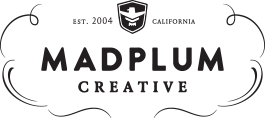How To: The 5 Step Guide to Creating Buyer Personas
Most marketers recognize that target buyers have different tastes, preferences, and behaviors. However, many marketers and business owners today don’t spend enough time exploring and mapping those behaviors during their digital marketing planning process. We see too often brands creating generic content and designs for their online properties that do not have a cohesive purpose. The result is: low conversion rates, high bounce rates, and poor revenue. This is all because some business owners don’t think about creating buyer personas.
Understanding the diverse personalities of target buyers is paramount for effective digital marketing strategies. Just as individuals vary in their tastes and preferences, they also exhibit distinct personality traits that influence their online behaviors. By delving into the intricacies of MBTI personality-types, marketers can gain deeper insights into the motivations and decision-making processes of their audience. Tailoring digital content and designs to resonate with specific personality profiles allows brands to establish a stronger connection with their target market, leading to higher engagement and conversion rates.
What are Buyer or Customer Personas?
Before you create a buyer persona, you need to understand what it means. This persona is essentially a fictional representation of your ideal customer based on the personality and preferences of your existing customers as well as market research. This persona will provide a guideline for you to create marketing campaigns, branding, and content that appeal to your target audience.
When you create a persona for your customers, you arm yourself with more information on their likes and dislikes. This will allow you to craft more precise and targeted marketing campaigns that have a higher likelihood of success. Buyer personas also help brands establish a personal connection with their customers.

How to Create Buyer Personas?
Creating a persona is easy if you follow the right process. Many brands don’t look beyond age, gender, and location when they craft their buyer personas and that can limit their understanding of the target audience. In fact, incomplete buyer personas can lead to marketing mistakes that can have a serious impact on your reputation. Here are five steps to creating a complete and thorough persona of a buyer:
Create a Basic Profile
The first step is to create a basic profile of your ideal buyers based on their location, gender, age, and similar identifiable data. All you need to do is consider who is more likely to purchase your products or hire your services. For example, if you own a beauty company, it might be likely the majority of your target audiences are women, potentially young women from their teens to their early 40s. We often see that this is where most brands begin and end their persona mapping. Keep going, there is much more to do!
Next, expand on the demographic data with psychographic information and subsegments. For example as a beauty brand you may want to speak to artists differently than moms. Or perhaps you can refine even smaller segments of age gaps. Don’t worry at this point about how small a segment might be, just get them down in note form to refine later. The beauty of digital marketing today is that you can like never before target extremely niche audience segments through online advertising and content. The basic profile is the foundation on which you build your buyer personas so spend an ample amount time during this step to make sure you really explore ideal users. The more time you devote, and the more specific you can get, the easier the following steps will be.
Look at the Current Customers in your Database
After you have done some of the mind mapping work of crafting your profiles its time to start expanding on it with actual customer data. You can look at your CRM database, past customer lists, or even attempt to explore some of your competitor customers. Consider your current buyer demographics and compare existing profiles with the ideal profiles you have mapped in step 1. You should also take special note of customers who are exceptions to the rule and don’t fit into the conventional target audience of your company.
These exceptions might be an indication that there’s a wider target audience available to you and you just need the right content and marketing strategies to bring them into the fold.
Conduct Surveys
A survey is an excellent tool to determine what your customers prefer and expect from your brand. It is also the best way to test your assumptions to this point and tighten up the details on your persona profile. Create a sample audience segment from the diverse list of customers you have compiled. Your goal is to both find customers that match specific segments and customers who would be willing to communicate with you and answer some questions. Begin the process of reaching out and asking them to participate.
Experience and expertise can be your friend during this process. Asking the right questions can be half the battle in compiling the best answers. Feel free to contact us if you need help determining what the survey questions should be or just simply don’t know where to start. Surveys eliminate a lot of guesswork involved in the process of creating buyer personas. By asking questions directly to your sample audience you can get an honest and fairly accurate estimate of a target customer personality profile.
Once you have done the manual work of surveying, compile and study the answers to the questions you asked and organize the data into what we call pillars. Pillars are personality and pain point buckets that help to organize your buyer behaviors. By this point you should have a very robust set of buyer persona profiles based on both quantitative and qualitative research. It’s important to not that this work takes time and its not always easy. But keep going it will be worth it!
Depending on how much information you have on your customers, and how receptive they are to your survey questions, it could end up being difficult for you to gather much information during this step. In fact you may not be able to get anything at all especially if you are launching a brand new product or brand. If you run into this issue, don’t worry! The next two steps will help to make up for any shortcomings.
Look at Social Media
Social media is a fountain of information regarding buyer personalities. People share a lot about themselves on social media whether they realize it or not. Once you have a basic profile in place, you can look at social media platforms that your target audiences are more likely to visit and study their behavior online. We typically look through a few different platforms: Facebook, Instagram, and Pinterest.
As you research be sure to look at which channels and influencers your target audiences follow, take note of their likes, consider their comments, and look at the content they are consuming. You can also setup sample advertising audiences through platforms like Facebook or LinkedIn to get quantifiable data such as volume size, etc.
This step is vitally important for content ideation as it will help you create blog posts and content that will appeal to your target audience, answer questions, and boost the chances of going viral. Make sure while you are taking notes to be looking through this lens. You aren’t just gathering info about what your audience is doing, but gathering ideas of how you can target them as well.
Identify Common Pain Points
This is one of the most important aspects of creating a market persona. By this stage, you should know your customer demographic and have a good idea of their preferences and expectations. The next step is to identify their pain points and needs. Pain points are problems and questions that your target audiences want solutions for. As an example, a natural food company might be targeting mom’s who are seeking healthier alternative snacks for their kids. Be specific and very critical during this process.
Every industry has target audiences that share common problems. When you know what these problems are and keep track of new or emerging questions, you can provide the best solutions to your customers. This information won’t just help you with your marketing campaigns, but also continuing to improve your products and services as well.
Multiple and Negative Customer Personas
Multiple personas will help you create diverse campaigns that target all of your possible customers. Many brands have customers from opposite sides of the spectrum so they might be interested in the product or service provided, but share nothing in common. In such cases, multiple personas can help you reach out to this diverse customer base without creating dull and generic marketing campaigns.
You don’t need to create many because that would only lead to more confusion and compromise your marketing strategy. A single brand can effectively manage two or three marketing personas at a time.
You can also create negative customer personas to identity people who you don’t want to target. This will help you control your marketing expenses and streamline your campaigns. Negative personas can include the individuals mentioned below:
- People who are too advanced or not advanced enough to handle your products and services.
- Students and other such individuals who will look at your content solely for research purposes.
- Customers who are expensive to acquire but don’t offer enough returns or pose a higher risk for your brand.
Well-crafted buyers personas can help you establish a good relationship with your customers and encourage brand loyalty. Without them, your marketing campaign will be scattered and directionless.
Posted In: Blog, Brand Crafting, Digital Marketing, Experience Marketing, Inspired Curation, The Power of Thoughtfulness



